Onychomycosis is a fungal nail disease caused by dermatophytes and Candida mushrooms.The infection is carried out in a contact house by infected humans and animals.Initially, the nail fungus develops slowly and imperceptibly, but after a while the symptoms of the disease increase rapidly.
Ways of infection
The fungus lesion may occur under the following conditions:
- Injuries, cuts, scratches, skin irritation on the toes;
- Often or prolonged contact of the legs with water: when the density of the tissues decreases, the spores of mycosis freely penetrate into the deep layers of the nails;
- Excessive sweating: tight shoes, synthetic socks create a warm and humid environment, optimal for the development of leg fungus;
- taking the course of antibacterial drugs;
- Varicose, venous insufficiency, diabetes mellitus and other systemic diseases that adversely affect capillary blood circulation and lymphatic flow.
As the fungal infection penetrates the upper and deep layers of the nail, mycelium begins to grow, destroying the nails.At this stage, using the diagnosis, you should determine the presence of a fungal infection and choose the optimal method of treatment.
Symptoms
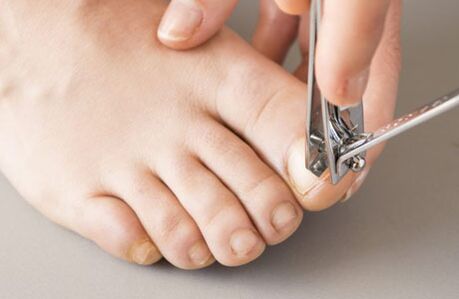
The symptoms of the disease can be divided into two categories: by changing the color and structure of the nails.
The color of the affected nail may vary depending on the pathogen:
- The yellow bands that appear on the edge of the nail show epidermophitosis;
- With trichthophyics, the nuance of the nails becomes gray-crimal;
- White spots and white bands show rubophitosis;
- In the case of Favus infection, the shade of the entire surface becomes yellow, while at the beginning the disease remains a smooth and shiny surface of the nails.
In the case of mycosis growth, the nail structure changes: the nail loses firmness and becomes loose, brittle, easily slows down.When infected with epidermophytes, the thickness of the nail increases and in shape resembles bird's nail.
Nail fungus can be accompanied by an unpleasant odor, allergic leg reactions, irritation, redness of the skin of the toes.In the case of an advanced stage of the disease, there is a risk of tearing and loss of nails.
How to treat nail fungus at home
For successful foot and nail treatment is an important integrated approach:
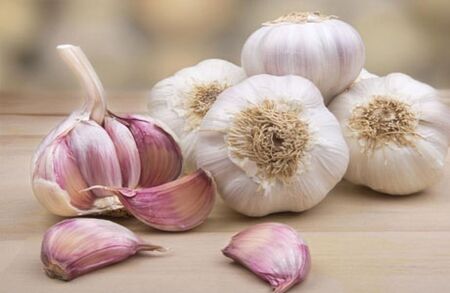
- The use of drug antifungal agents in the form of cream, ointment, lacquer;
- the use of traditional medicine recipes;
- Preventive measures after recovery.
Along with medicines, home treatment recipes are quite effective in the fight against onychomycosis.The standard treatment of the nail sponge of the home of the home involves the use of compresses and baths with natural fungistatic agents.
- Garlic compressionSSeveral garlic cloves are crushed in mashed potatoes, which is placed on the affected toenails.Garlic should be stored for 40 minutes every night.
- Fir oilSGrease the affected areas with fir with oil several times a day.The duration of treatment is 2-4 months.
- Timoyan bathSFor the infusion you will need to pour 100 grams of dry thyme grass with 2 liters of boiling water.When the solution is moderately hot, it is necessary to strain the liquid and stew the legs for 15-20 minutes.The procedure is performed daily until recovery.
- Baths with salt and potassium permanganateSIn hot water (3 liters), add 3 tbsp.l.Salt and several crystals of potassium permanganate so that the solution has a pink color.The legs are stewed for 20 minutes, after which you should apply antifungal cream.
- Rowan is leavingS100 grams of green mountain ash leaves should be cut and added 1 tablespoon of salt.Compression of Rowan's leaves is covered with polyethylene and stored overnight.
Iodine
Alcoholic iodine solution is an excellent antiseptic that has been successfully used in antifungal home method therapy.
To get rid of the fungus, use 5% iodine solution.To do this, you need to drip iodine solution on the affected nail plates twice a day.A favorable result of treatment will be noticeable in a week.Continue treatment with iodine for 5 to 8 weeks.
Needed iodine bathrooms.In moderate hot water, add 5 drops of 5%iodine and stew your feet for 10-15 minutes.The disinfectant effect of the iodine solution acts on a fungal infection better if the nails and skin of the fingers are well stewed.
After the procedure, you should wipe your feet with paper towels and treat hydrogen peroxide.Antifungal cream should then be applied.
Ammonia
The ammonia solution has been successfully used to treat nail fungus as it has not only antifungal but also antibacterial properties.
The ammonia compress consists of 200 ml of cooled boiled water and 1 tbsp l.Ammonia.Cotton pads are used for the procedure, which should be wetted in the solution and placed on the affected nails.The compress is left overnight.To fix cotton pads on your fingers, you can wear attacks.
Therapeutic bath: In moderate hot water you should add 2-3 tablespoons of ammonia, 1 tablespoon liquid soap and 1 tablespoon of baking soda.You need to stew your feet in the solution for 10-15 minutes.The nails are then cut and the top layer with a file is cut on top.Then you need to rinse your feet in clean water, wipe dry and use antifungal ointment or lacquer at night.
The nail fungus with this method should be treated every night for 10-12 days.Once the improvements become noticeable, the bathrooms should be used for another 2-3 weeks.
Hydrogen peroxide
Hydrogen peroxide is an excellent antiseptic and has proven to treat various types of dermatophytes.Use 3%hydrogen peroxide solution as high concentration can adversely affect the nails and skin of the feet.
To prepare the compress, you will need a bath with hot soapy water, 3%solution of hydrogen peroxide, cotton pads, polyethylene.The legs should be stewed in hot water for 10-15 minutes and then attached cotton pads impregnated with hydrogen peroxide to damaged nails.You can cover the polyethylene compress on top and insulate.
The compress is placed for 40-50 minutes, after which the antifungal cream is applied to the surface of the nails on the legs.The course of treatment is 15-20 days.
Vinegar and egg
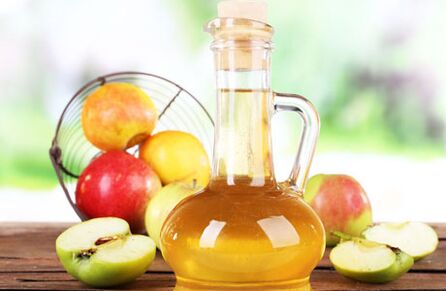
Vinegar and acetic acid are often used to combat fungal infections at home, as the acidic environment inhibits the development of all types of mycosis.Recipes use 3% and 9% vinegar concentration, vinegar essence, apple cider vinegar.In this case, the product is mixed with other components to soften the effect of the acidic medium on the skin.
- Treatment with vinegar and eggSIt is necessary to take 3 raw proteins and 2 tbsp.l.vinegar and alcohol.The product is thoroughly stirred to a homogeneous condition and applied to the affected nails on gauze or cotton pads.After 20 minutes, the used cotton pads are discarded and the compress should be repeated again with new discs.Then you need to wash your feet in clean water and apply antifungal lacquer.During the procedure you can feel a slight burning sensation, the redness of the skin is possible - this is how the effect of vinegar is manifested.If the burning sensation is very strong, the concentration of vinegar in the recipe should be reduced.It will take 2-3 months of daily procedures to cure the fungus at home with vinegar.
- Iodine and apple cider vinegarSThese ingredients are mixed in equal proportions and the product is applied cotton.Use a new stick for each nail.As the recipe includes iodine, the nail plate will be brown.The medical mixture can also be applied to the skin affected by the fungus.The solution is used 2-3 times a day for 10 days with a break for one week.At the end of treatment, the procedure is repeated several times a week for a month for preventive purposes.
Folk methods of treatment
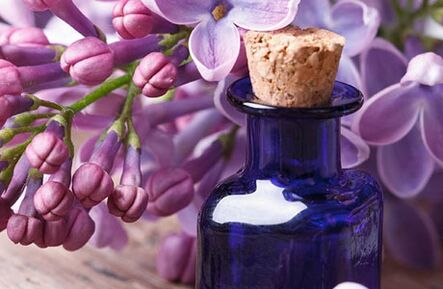
The external treatment of fungi at home is carried out with the help of a decoction of medicinal herbs and tinctures.The only condition when it is necessary to stop the treatment of the nail sponge with the remedies indicated is the appearance of allergic reactions.
- LilacSLilac has a strong antibacterial effect.The tincture will require 10 grams of dry lilacs and 100 ml of alcohol.The product should be insistent in a dark place.Keep the tincture in a dark glass container.To eliminate the nail sponge, spread the affected areas with lilac tincture 2-4 times a day until complete cure.
- Waterproof waterSChezieric is a toxic grass that is used only externally to destroy dermatophytes, loss, lice.The alcohol solution of Cheeritsa is sold in a pharmacy.The product is applied to the affected nails and skin on the legs several times a day.Cheeritsa can also be used as a preventative agent after the destruction of onychomycosis.
- Antifungal collectionSFor a decoction, it will require routine grass, fence fruits and noodles root.You need to take 1 tablespoon of each plant and pour a glass of boiling water.Once the liquid is inflated and cooled, it can be used as a compress 2-3 times a day.
- Decoction of dillSDill grass has a strong disinfectant.For cooking you will need to boil 2 tablespoons of dried dill in two liters of water using a water bath for 15-20 minutes.During this time, some of the water evaporates, so you need to add boiling water to the decoction to bring the amount of liquid up to 2 liters.Dill decoction is used for daily foot baths for onychomycosis and dermatomycosis at the stop.This method of home treatment is used daily for a month.
- SealandineSThe grass of Salandin is quite poisonous and has bactericidal and antifungal properties.To prepare the infusion, you will need 3 tbsp.Selendin and half a liter of boiling water.The resulting liquid after cooling should be filtered.Tselandin infusion is used to wipe and compress areas with a fungus 2-3 times a day.
- MintSMint decoction relieves inflammation and itching and is used for foot baths for onychomycosis.It is necessary to prepare the required amount of decoction based on the proportion: 2 tbsp.l.Dry mint grass and 1 cup boiling water.The cooking time is 15 minutes in a water bath.
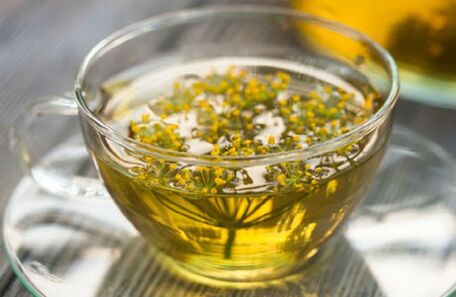
What can be the consequences
If you do not cure the disease, then the advanced form of nail fungus can have serious consequences, which can significantly impair the general condition of the body and toenails.The main effects of onychomycosis include the following conditions:
- Perenoga hyperkeratosis is a complication of onychomycosis, in which the nails are significantly compacted.
- Nail onycholysis - separation of the nail from the nail when the void is formed under a solid layer.
- Destruction of nails.In this case, you may need to surgically remove the nail.
- Epidermophidides are allergic effects of nail sponge that periodically exhibit the rashes throughout the body.
- There is a likelihood of spreading infection throughout the body.Mycosis can hit significant areas of the skin of the legs, arms, faces, as well as hair follicles and in rare cases nerve and lymphatic systems.
Prevention
The prevention of onychomycosis is aimed at maintaining the protective functions of the body at a high level, this requires the following measures:
- Take vitamins and mineral complexes;
- Consume enough vegetables;
- Minimizing the use of foods high in sugar, as high blood glucose levels help multiply mycosis;
- Elimination of intestinal dysbiosis;
- Avoid stressful situations.
You should also monitor skin integrity and leg hygiene.This follows:
- Treat wounds and swelling in time;
- Get rid of leg hyperhidrosis;
- Do not use other people's shoes and hygiene products.
You can use medicines that are used once a week to prevent foot fungus.For this purpose, antifungal varnishes are used, which are allowed to apply colored lacquer.















